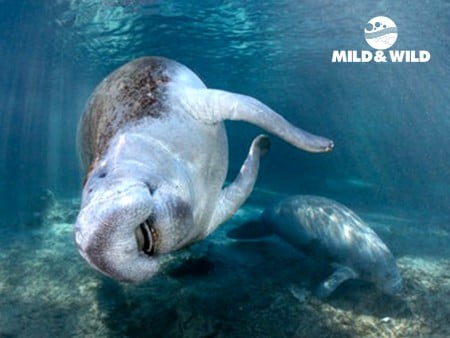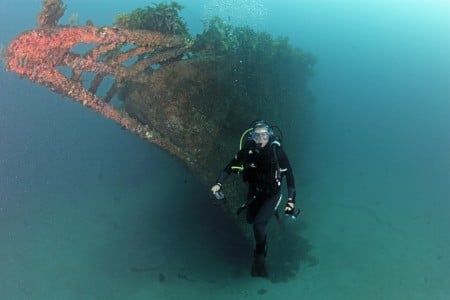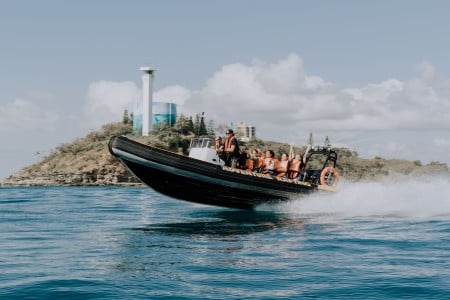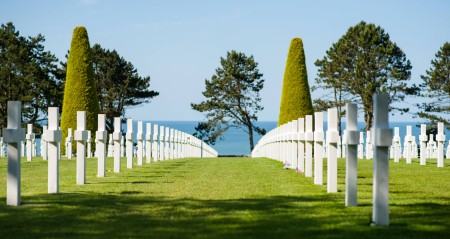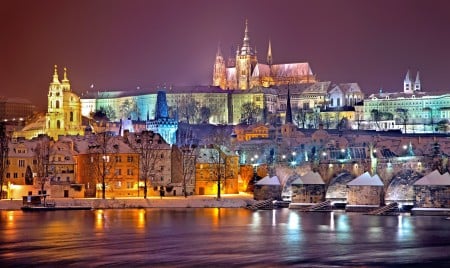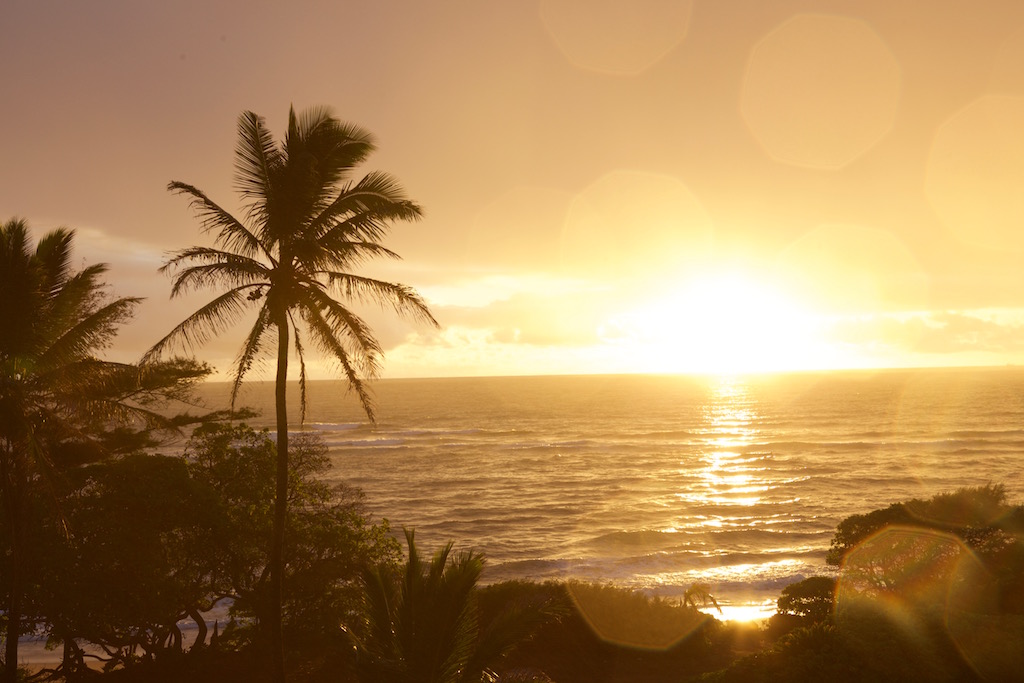
Hawaii - Adventuring in the South Pacific - 2018 English
Just south of the Tropic of Cancer, in the midst of the mighty Pacific Ocean, lie the enchanting South Sea Islands of Hawaii. Rising out of the deep blue waters to a stunning height of 4,205 meters (13,792 ft), the Hawaiian Islands are one the of the most diverse and rewarding of the South Sea destinations. Isolated from any other landmass, these Islands were created by continuous lava eruptions on one of the Earth’s “hot spots”. As plate tectonics worked, new islands were born, creating what we know today as the chain of Hawaiian Islands. The “younger” islands are still rounded and dotted with giant, lava-gushing volcanoes reaching over 4,000m, while the “oldest” islands are so heavily eroded that they consist of a series of razor sharp ridges cut into endless canyons. The geological diversity is one of the wonders of these islands. Although born in total isolation, wind and currents brought plant and animal life that developed to fill many of the ecological niches. This process created a unique endemic plant and animal life - there are over 6,000 species that can only be found here. The Hawaiian Islands are the northern most islands in the “Polynesian Triangle”. The original inhabitants arrived ca. 300 AD by outrigger canoes traveling 1,600 km from the Marquesas. They brought with them breadfruit, coconut palms, and taro used to establish a thriving, seafaring Polynesian culture. Traveling in small groups allows us to explore the islands in depths in a way few tourists see the sights. Our local guide will show us all the famous and hidden wonders of Hawaii. White, green and black sand beaches, giant craters, frozen lava lakes, lava sputtering cones, stunning waterfalls, and ancient rock art sites. Our paths through tropical high-altitude swamps, endemic cloud forests, and the stark high altitude alpine desert of Mauna Kea will lead to incredible viewpoints overlooking the famous North Shore. There is ample time to enjoy the magnificent beaches – many known only to locals. With a little luck, we will snorkel with sea turtles and swarms of colorful tropical fish, as well as see humpback whales and pods of spinner dolphins. Conditions permitting, Pele, the Hawaiian goddess of the volcano, will offer us unforgettable close-up views of erupting lava. Join us on an unusual, in-depth journey to explore the treasures of these magnificent islands. HIGHLIGHTS: Half board 6 nights in waterfront / beachfront tourist-class hotels 3* 6 picnic lunches (L) (self-made), two restaurant lunches 6 breakfasts (B) · Short walks to amazing sights, many hidden · Much time to explore the parks and sights · Explore endemic rain and bamboo forests, active volcanic craters, lava deserts, historical trails, and stunning south sea beaches · Chances to explore the islands from helicopters, kayaks, on foot, and swimming with manta rays · Time for swimming and snorkeling on coral reefs ITENERARY: Day 1. Arrival in Kona Arrival in Kona, transfer on own to the waterfront hotel. Royal Kona Hotel, 3* or similar, 3 nights (airport shuttle approx. $30/pp.) Day 2. Polulu Valley, ancient temples and beach walks along the Kohala coast, B, L 8 AM: Your guide will welcome you at the hotel. Of all the islands, Hawaii, or The Big Island, is known for its authentic atmosphere. Today we explore one of the most remote valleys of Hawaii, the wild and remote Polulu Valley. We hike to the bottom of the valley and explore the wild beach. Then we stop at Puukohola and Lapakahi, both remarkable sites of ancient Hawaiian temples. In the afternoon, we enjoy time to swim at Kaloko- Honokohau National Historic Park, a protected bay where turtles play in the surf. We enjoy a welcome drink at Bite Me Fish Market, where the locals bring in fresh fish. Several shorter walks: ca. 2 hrs, ca. 2-3 miles / 4-6 km, elevation difference: +/-200m Day 3. City of Refuge and Green Sand Beaches, B, L Today we will explore the fabulous “City of Refuge” or “Pu’uhona O Honaunau” National Historical Park, which houses a picture perfect Polynesian Village perched on lava cliffs. Then we continue to the southern end of the Island and walk windswept trails to the famous green beach. Here olivine crystals from ancient eruptions have created a green sand beach (there are only two green sand beaches in the world)! We either walk the windswept tracks or hitch a ride on one of the pick-ups to see the beach. Late afternoon finds us at Punaluu Beach, where we marvel at a pitch-black beach, where turtles like to rest. Our hotel is located in tropical Hilo, which we reach late in the day. Hilo Hawaiian Hotel, 3*or similar, 2 nights Walks over cliffs and beaches: ca. 3-4 hrs, 5 miles / 8 km Day 4. Volcanoes National Park, B, L After a leisurely morning, we explore Volcanoes NP. This national park is part of Mauna Loa, the world’s largest shield volcano. It is remarkable as it sits on the actual hot spot where islands are continually being created, producing never-ending volcanic activity and eruptions. (Check conditions online at www.nps.gov). Trails lead through massive, cooled craters, steep banks venting sulfurous gasses, and fern-covered lava tubes. This is truly a primordial landscape, raw and still in the making. Our daytime walks will take us along Kilauea Crater’s Rim, clad in cloud forests of tree ferns and native Ohia. We have the option to walk into the heart of Pele’s domain, the Kilauea Iki Crater, walking over frozen lava lakes before continuing through the dark Thurston Lava Tube. We may wait for the evening to see the lava lake glow in the crater. LAVA ALERT If the lava is flowing and reachable on foot, we will spend the day walking to the active lava flow. The distances walked will vary. The terrain is cooled lava, uneven footing, requiring good balance and a headlamp for the return back in dark. In this case, we will only do a short walk at Kileau Iki Crater. Should the lava flow outside the park, local guides charge approx. $100 per person for the guided experience. Walks: ca. 3 hrs, elevation difference: +/-200m Day 5. Mauna Kea’s Saddle Road and on to Kauai, B, L In the morning, you have a chance to book heli rides over the lava flows (not included, starting at $230 for 45 minutes). Then we head to the Mauna Kea visitor center at 9200 ft. (2800m). Several short walks take us to cinder cones and the exceedingly rare Silversword Plants. Late afternoon, we catch a flight to Kauai. Our hotel is located on the beach in Kapaa. Kauai Shores Hotel, 3* or similar, 2 nights Day 6. Waimea Canyon and Napali Coast, B, L Kauai is called the Garden Isle and is considered by many to be the most beautiful of the islands. Kauai is also the oldest island where volcanic activity has been dormant for over one million years. Erosional forces have created a truly stunning landscape of sheer volcanic cliffs and spires. When Mark Twain visited the islands, he dubbed Waimea Canyon the “Grand Canyon of the Pacific”. Both the canyon’s deep red color and size are remarkable. An early start brings us to the fantastic Kalalau Lookout with incredible views over the wild north shore 4000 ft. (1200m) below. The views into Waimea Canyon are also stunning. We explore the area around Poipu, where we stroll to remote Shipwreck Beach and enjoy the solitude of a remote beach reached only on foot. Walk: 5 hrs, 4miles / 6 km, elevation difference: +/- 50m Day 7. Kauai’s North Shore, B, L Kauai’s North Shore is famous for its one-of-a-kind scenery. A narrow, winding road leads to the far end of the island. We stop at the Kilauea Lighthouse to spot pelagic birds such as red-footed booby, albatross, frigate bird, and the graceful tropic birds. At the stunning Limahule Botanical Garden, we walk underneath the towers of the volcanic cliffs and learn about life and agricultural practices of the ancient Hawaiians. Conditions permitting, we enjoy beach time at the amazing beaches of the North Shore. We return to the hotel by 6 pm, in time for you to catch a nighttime flight back to the US West Coast. SpeediShuttle airport transfers are approx. $25/pp. ADDITIONAL COMMENTS AND EXPENSES: Compared to the national parks in the Western USA, Hawaii is best experienced not only on foot but also through boat rides, with kayaks, and by helicopter. Therefore, we highly recommend various excursions to fully appreciate the islands and see all their natural wonders. Those excursions are not included in the tour price, and it will be up to the passenger to decide on site. Depending on the weather and the group’s desires, your tour director may adjust the activities of each day to accommodate. Please note that not all activities are possible on each day. In some instances, the group will have to decide what to do. HELI RIDES: Due to the inaccessibility of many areas of the islands, some places are best seen from the air. The most remarkable heli ride is in Kauai into canyons and waterfalls. In Hilo you can take a heli ride to see the erupting lava. Heli rides are about $220 per person, per tour. MANTA RAYS: This is the only place in the world where you can snorkel with giant manta rays. These peaceful fish glide through the water at a close distance. This adventure can be had near Kona at night for about $90. LAVA ERUPTIONS: Every month the lava flow changes. At times the lava flows inside the national park, and at others, it flows outside the park. Sometimes it reaches the ocean, sometimes it doesn’t. Sometimes its accessible on foot, sometimes its too far to be reached. At the start of the tour we will check the status of the volcano. Due to the nature of the volcano, trails may close any time. Please be flexible. When the lava is outside the national park boundary, the best way to see the lava is with a local guide that knows where the lava flows. This guide would be able to get you very close to the actual lava while keeping you safe. For best photographic images we recommend that the group go with a local expert on the lava nighttime walk. This way you will get to see the lava very close up. The cost is about $100/pp for a guided lava walk. RECOMMENDED GEAR -Hiking poles -Lightweight hiking shoes that work on really sharp lava, rock, sand, and also in mud -Sandals like teva -Headlamp with spare batteries -Bathing suits -Lightweight rain jacket -Sunhat -Sweater and windbreaker for the walks at altitude -Recommended: mask, fins, and snorkel (these can be bought locally)
Recently viewed

